Your dining room sets the mood for meals and gatherings, making thoughtful decor essential. Effective dining room decor balances functionality with style to create a space that feels inviting and comfortable. Whether you prefer a minimalist look or a more traditional setting, choosing the right furniture, colors, and accents can transform your dining area into a cohesive and enjoyable environment.
Focus on key elements like lighting, wall treatments, and flooring to enhance the room’s atmosphere. Small details, such as decorative vases or artwork, can add personality without overwhelming the space. By aligning these components with your personal taste, you ensure your dining room reflects both your lifestyle and your aesthetic preferences.
Key Takeways
- Choose decor that combines style with practical use.
- Use lighting and surface details to shape the room’s feel.
- Add subtle accents for a personalized touch.
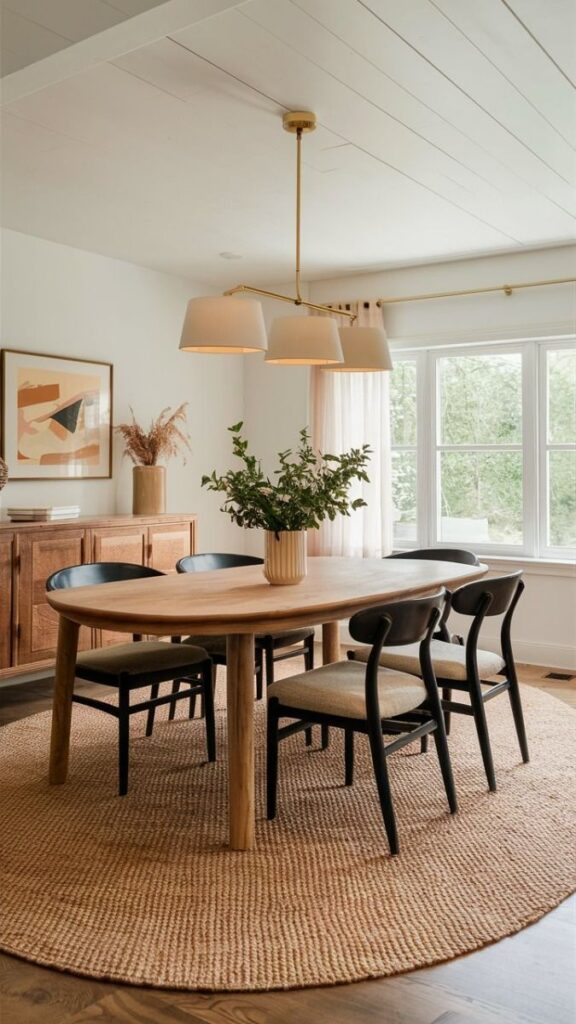
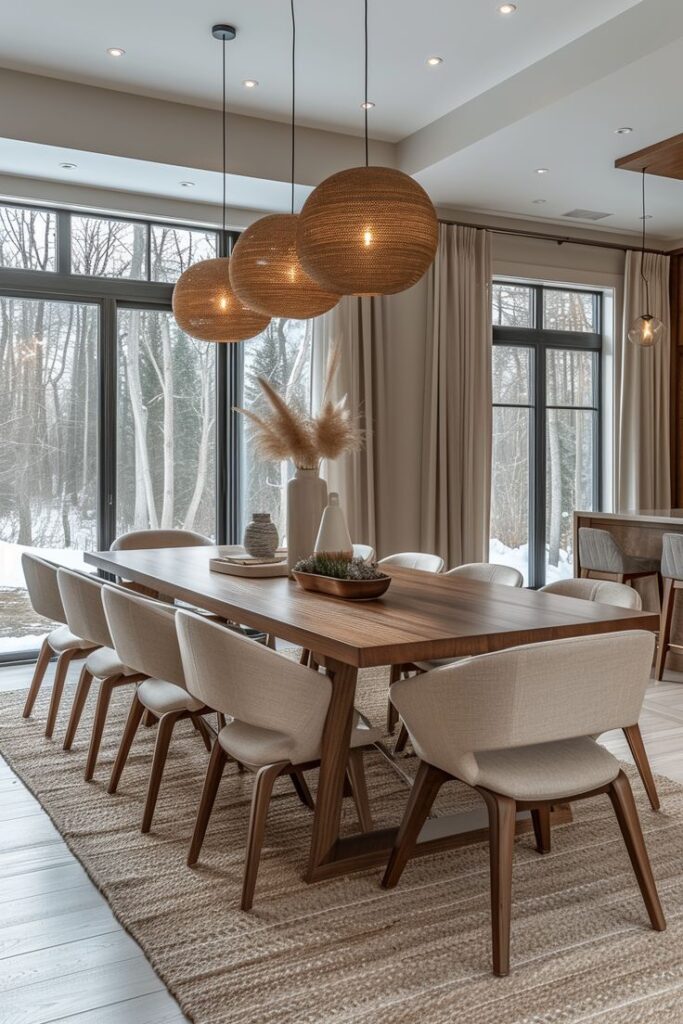
Understanding Dining Room Decor Principles
Your dining room should serve your daily needs while reflecting your taste. Attention to balance, color, and comfort helps create a space that is both practical and elegant.
Balancing Function and Style
Start by defining how you use your dining room most often. If you frequently host dinners, prioritize ample seating and easy movement.
Lighting plays a key role in balancing function and style. Choose fixtures in scale with your table to unify the space and provide enough illumination.
Furniture should combine durability with design. Select materials and finishes that withstand use but also match the room’s aesthetic.
Keep pathways clear and avoid overcrowding. Balance the visual weight of furniture, lighting, and decor to prevent the room from feeling cramped or sparse.
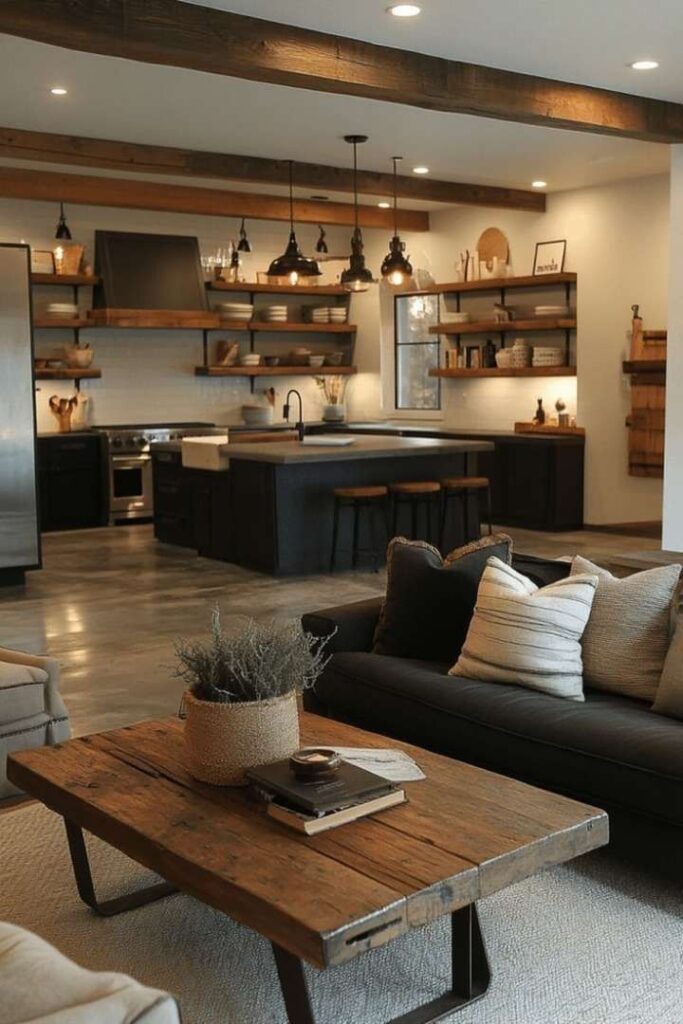
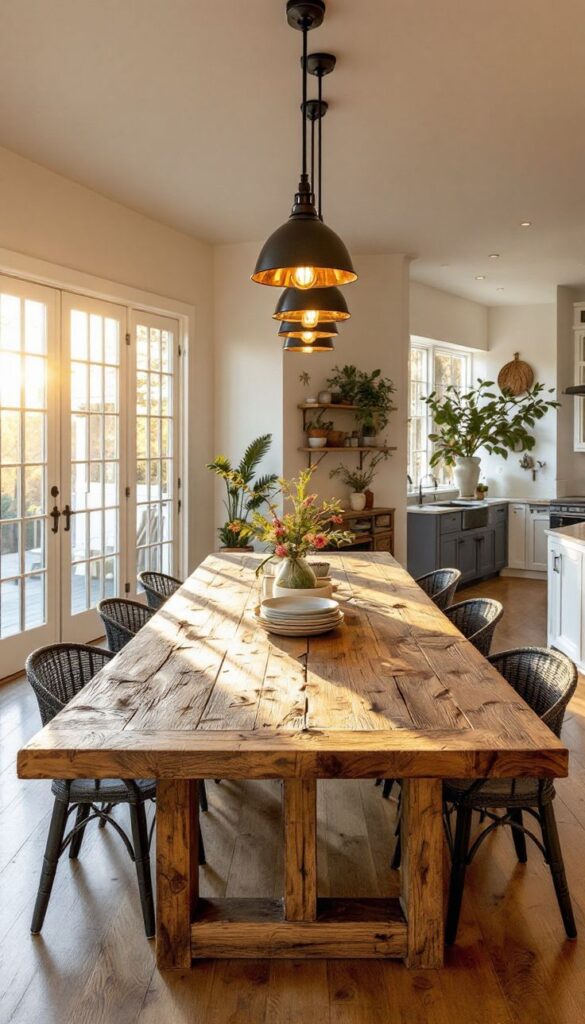
Choosing a Cohesive Color Palette
Choose colors that complement your existing home style and furniture. Neutral tones offer flexibility, while deeper colors add warmth and sophistication.
A successful palette often includes three to four colors: a dominant base, a secondary shade, and one or two accent hues.
Use color to highlight focal points like artwork, rugs, or the dining table. Contrasting colors can define spaces but maintain harmony throughout.
Remember lighting affects color perception. Test samples in natural and artificial light before committing to paint or textiles.
Incorporating Elegance and Comfort
Elegance in a dining room comes from clean lines, quality materials, and thoughtful details like textiles or lighting.
Comfort is essential for the dining experience. Choose chairs that support posture and have enough cushioning.
Textures add dimension and warmth. Combine smooth surfaces, like wood or glass, with softer elements like cushions or curtains.
Introduce subtle accents such as a statement chandelier or a decorative centerpiece to elevate the room without overwhelming it.
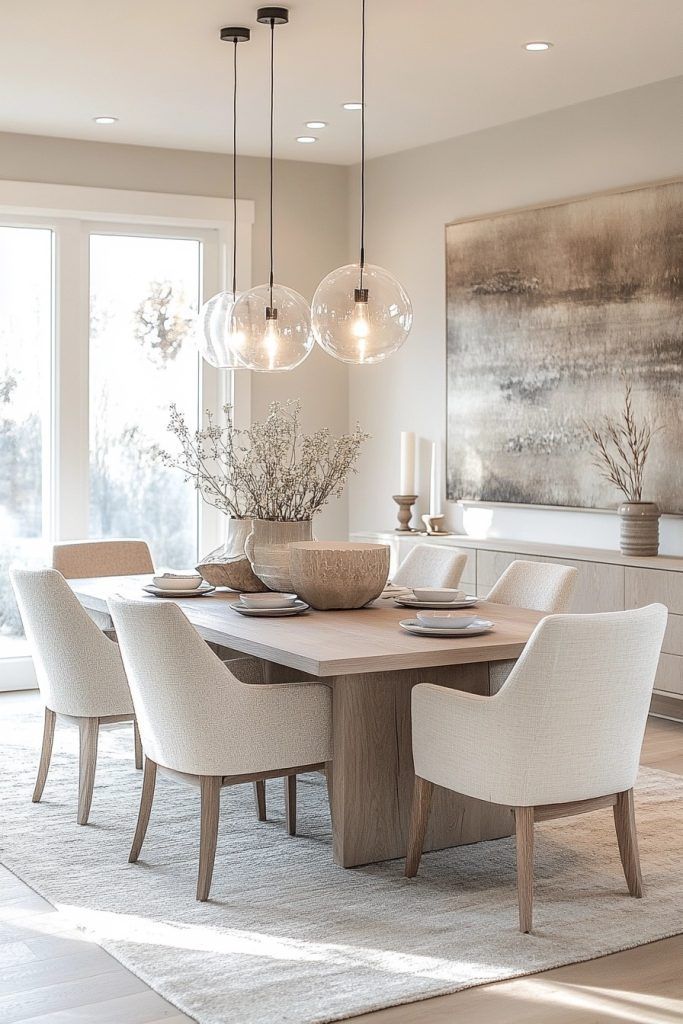
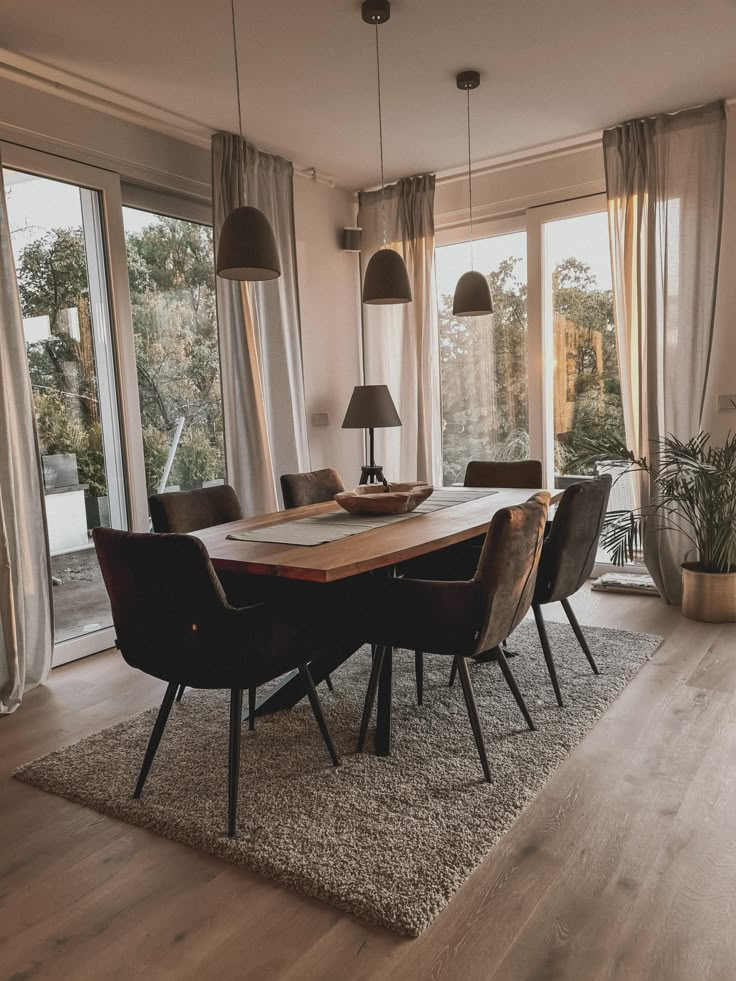
Furnishing Your Dining Room
Choosing the right furniture enhances both the function and style of your dining room. Focus on pieces that balance comfort, space, and aesthetics to create an inviting atmosphere.
Selecting the Ideal Dining Table
Your dining table is the room’s centerpiece, so consider size, shape, and material carefully. Choose a table that fits the available space while leaving at least 36 inches around for comfortable movement.
Rectangular tables work well for longer rooms, while round tables encourage conversation in smaller or square spaces. Materials range from solid wood for durability and warmth, to glass or metal for a modern look.
Think about your primary use—casual family meals or formal entertaining—as this affects the style and features you need. Expandable tables add flexibility if you host guests occasionally.
Dining Chair Styles and Arrangements
Dining chairs combine comfort with style, so prioritize supportive seating with the right height for your table. Upholstered chairs add softness and can be chosen in colors or patterns to enhance your decor.
Mixing chair styles is a trendy option that brings visual interest, while benches offer a casual, space-saving alternative. Arrange chairs to match the number of people you usually seat, but keep extra space for ease of movement.
Ensure chair legs won’t scratch your flooring by using felt pads or area rugs underneath.
Buffets, Sideboards, and Storage Options
Storage pieces like buffets and sideboards improve organization by holding dishes, linens, or serveware. Position these along walls for easy access and to free up table space.
Choose units with a mix of drawers and cabinets to accommodate different items. Some models also function as a serving station during meals.
Consider the style and material to coordinate with your dining table and chairs, maintaining a cohesive look. Adjustable shelves and soft-close doors add convenience and longevity.
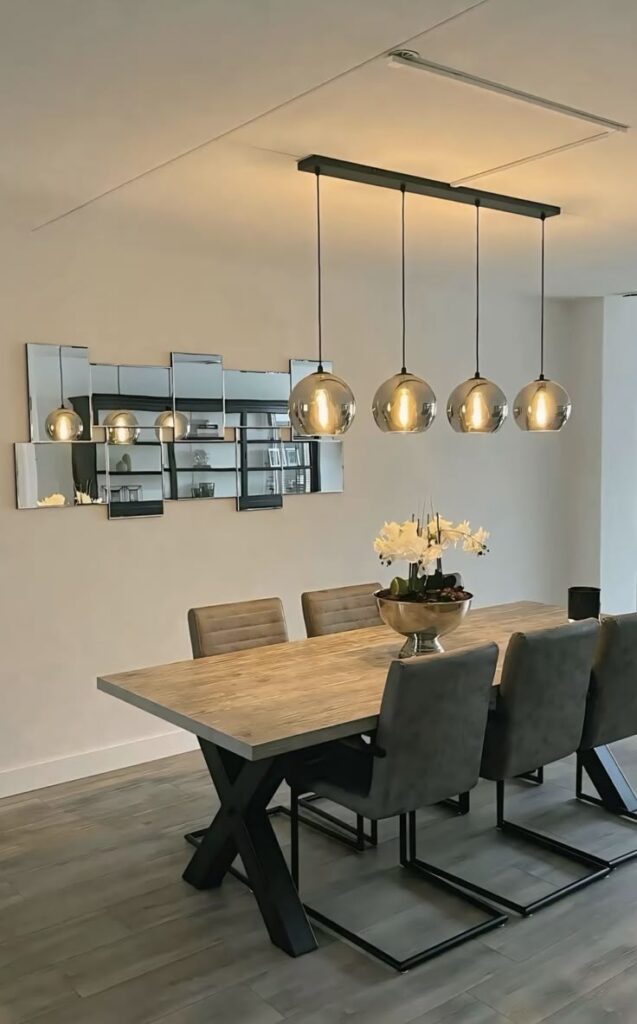
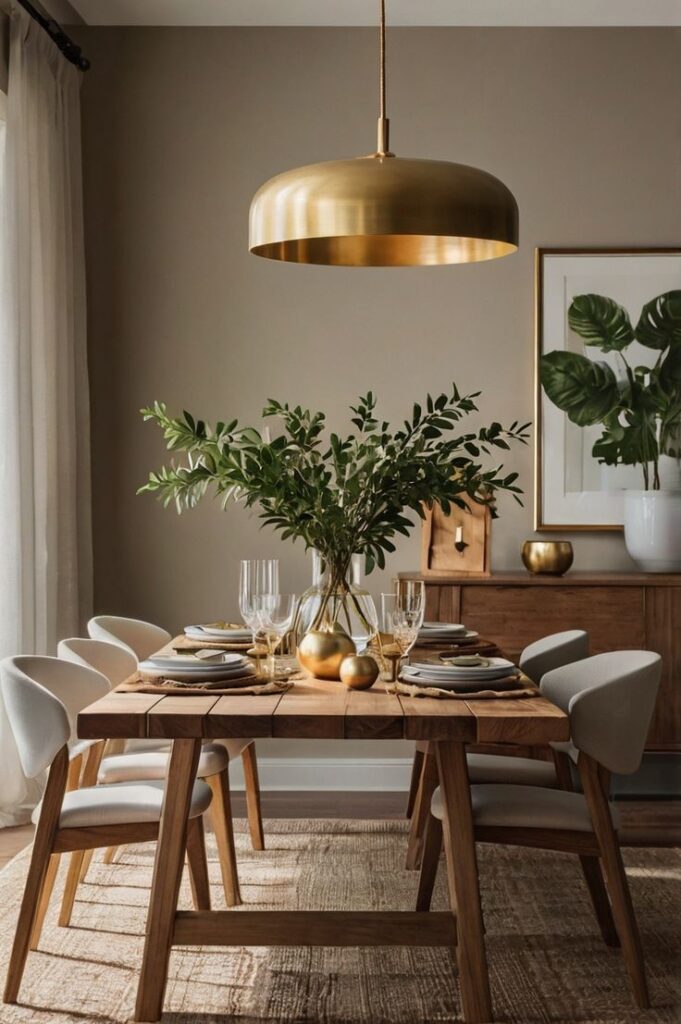
Wall and Floor Design Elements
Your dining room’s atmosphere is shaped greatly by what you choose for walls and floors. Selecting the right textures, colors, and materials can define the space’s style and enhance its functionality.
Wallpaper and Wall Treatments
Wallpaper offers bold patterns and textures that can transform your dining room instantly. Choose durable, washable wallpaper designed specifically for high-traffic areas to handle spills and cleaning easily.
Textured wall treatments like wood paneling or PVC molding add depth without overwhelming the space. If you prefer a minimalist look, consider painting one accent wall in a rich, contrasting color instead of decorating every wall.
Curtains and fabric wall hangings can soften the room’s feel. Just ensure they complement the wallpaper or paint to maintain visual balance.
Flooring Choices for Dining Spaces
Your floor must be both stylish and practical. Hardwoods remain popular for dining rooms due to their durability and timeless appeal. Opt for finishes that resist scratches and stains.
Tile or stone floors work well in warmer climates and offer easy maintenance. They can be softened by area rugs that define the dining zone and absorb sound.
If you select carpet, choose a low-pile option with stain-resistant treatment to prevent damage and maintain cleanliness under the table.
Art and Decorative Accents
Art brings personality and focus to blank dining room walls. Large statement pieces can define the room’s mood, especially when aligned with your color scheme.
Gallery walls provide visual interest but require careful curation to avoid clutter. Keep frames consistent in color or style for cohesion.
Mirrors can enlarge the space visually and reflect natural light. Use bold frames to make them decorative features.
Other accents like sconces or sculptural wall hangings add dimension without encroaching on the dining area’s function.
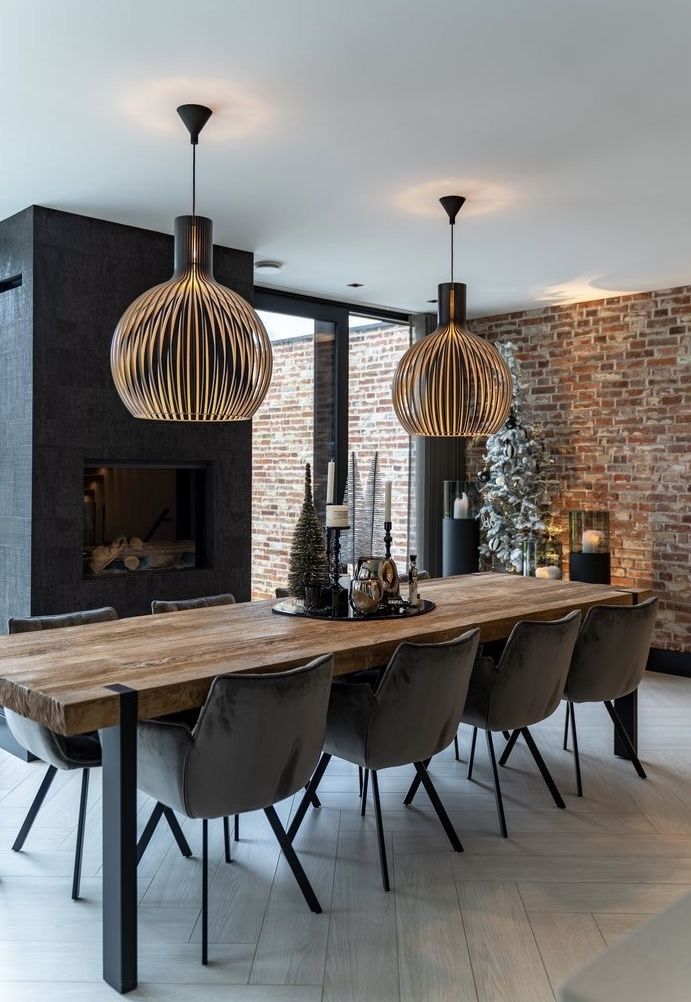
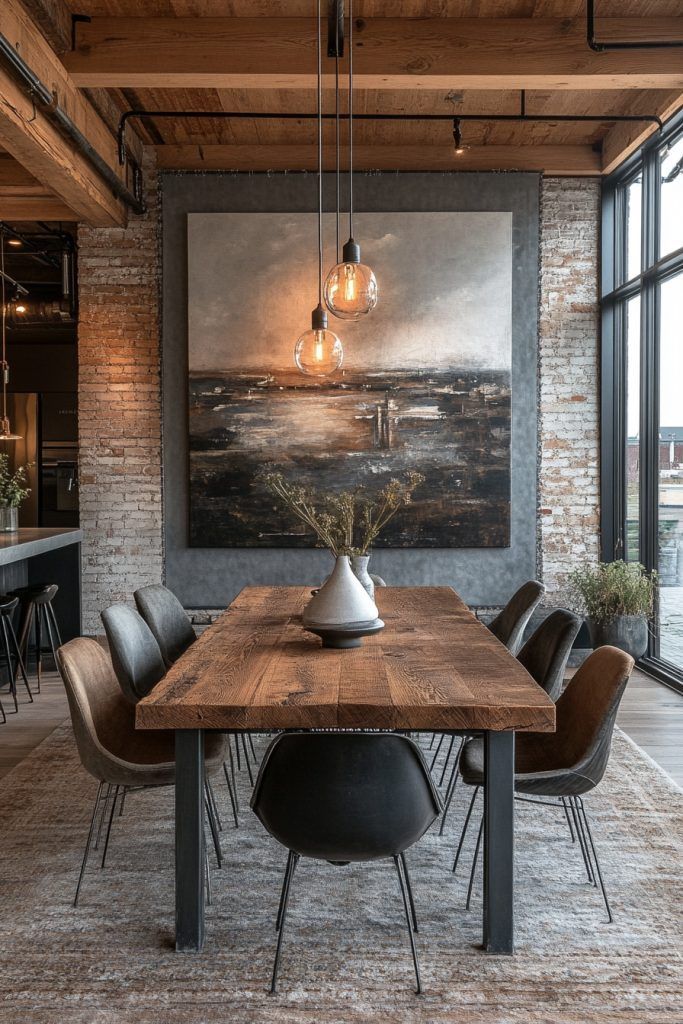
Lighting and Atmosphere
Lighting shapes the feel and function of your dining room. The right fixtures combine style with purpose, enhancing both elegance and comfort. Consider how different lighting elements influence mood and visibility in your space.
Choosing the Right Chandelier or Pendant
A chandelier or pendant light often acts as the centerpiece of your dining room. Select one that fits the size and style of your table to maintain balance. For a rectangular table, a linear chandelier works well, while round tables suit circular or oval fixtures.
Materials like crystal, wood, or metal offer various aesthetics from formal to casual. Adjust the height so the fixture hangs about 30 to 36 inches above the table surface — this ensures light is focused without obstructing views.
Dimmer switches add flexibility, allowing you to control brightness for different occasions. Your choice should complement existing decor while providing ample light for dining tasks.
Ambient and Accent Lighting
Ambient lighting creates overall illumination, setting a neutral base mood. Recessed lights, ceiling-mounted fixtures, or soft wall sconces work well. Use warm white bulbs to promote a welcoming, elegant atmosphere.
Accent lighting highlights specific features such as artwork, plants, or architectural details. This includes directional spotlights or LED strips. Use these sparingly to avoid clutter and maintain a clean, sophisticated look.
Combining ambient and accent layers gives depth to the room’s lighting. This approach allows you to adapt the atmosphere to casual dinners or formal gatherings easily.
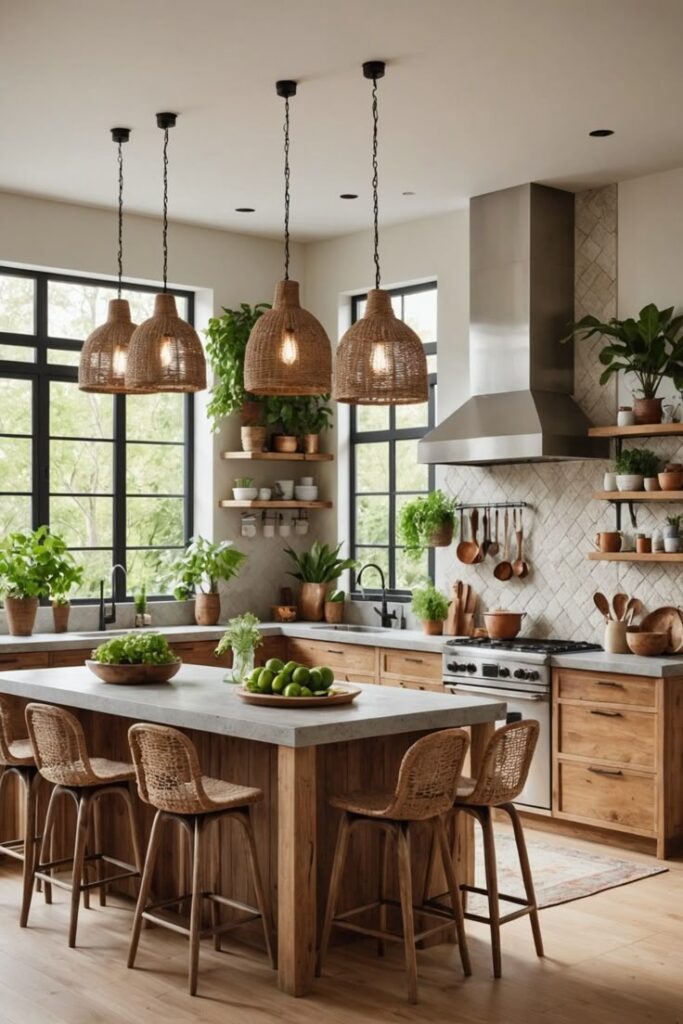
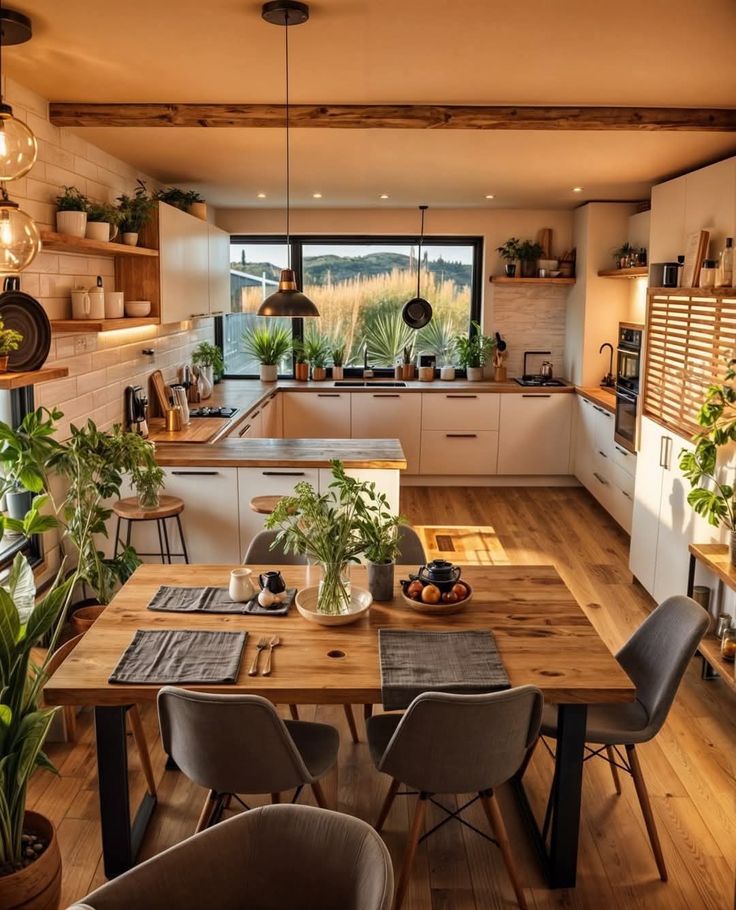
Finishing Touches and Seasonal Updates
Fine details can elevate your dining room’s elegance while letting you adapt the space for different seasons. Strategic choices in fabrics, tableware, and greenery can create a polished look with minimal effort.
Textiles and Tableware Selection
Choose textiles that complement your dining room’s color palette and style. Linen or cotton napkins in muted tones add subtle sophistication, while velvet cushions can introduce texture without overwhelming the space. Consider replacing or layering table runners and placemats seasonally, such as light, breathable fabrics for spring and heavier textures for winter.
Your tableware should balance functionality with style. Matte or glossy finishes in neutral colors often work best for versatility. For an elegant effect, integrate metallic accents through chargers, cutlery, or glassware. Keep patterns simple unless your other decor is understated, to avoid visual clutter. Focus on quality pieces that withstand frequent use yet maintain a refined aesthetic.
Incorporating Greenery and Centerpieces
Incorporate natural elements to add freshness and life to your dining room. Seasonal greenery such as eucalyptus or olive branches works well for a timeless look. For spring, consider floral arrangements with tulips or peonies, while autumn favors warm-toned foliage like dried wheat or branches.
Centerpieces should suit the room’s scale and style without overpowering. Low arrangements and minimal vases allow for easy conversation across the table. Consider mixing textures—smooth ceramics, woven baskets, or glass containers—to deepen visual interest while preserving simplicity and elegance. Rotate your centerpiece elements to refresh the space in sync with the seasons or special occasions.
- 898shares
- Facebook0
- Pinterest898
- Twitter0



